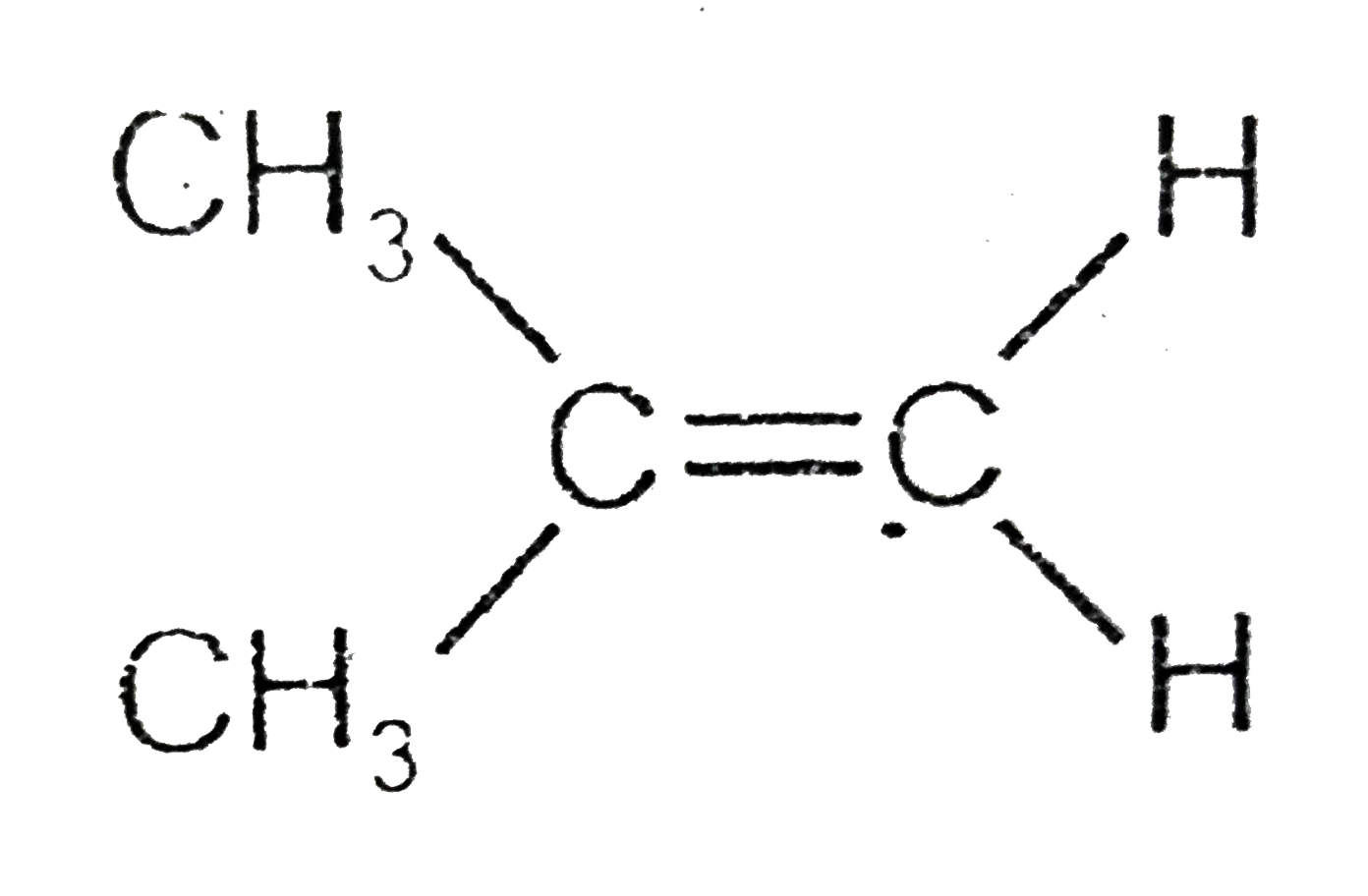Markovnikov rule is applicable to

The correct Answer is:D
To determine the applicability of Markovnikov's rule to a given compound, we need to follow these steps:
Step 1: Identify the Compounds
First, we need to look at the compounds provided in the question. We will analyze each compound to see if they contain an alkene (a carbon-carbon double bond) and whether they are symmetrical or unsymmetrical.
Step 2: Check for Unsymmetrical Alkenes
Markovnikov's rule states that when an unsymmetrical alkene reacts with a reagent (like H-X), the more electronegative part of the reagent will attach to the more substituted carbon atom. This means we need to identify if the alkene is unsymmetrical, which occurs when the two carbon atoms of the double bond have different substituents.
- Compound 1: Check if both sides of the double bond have the same or different groups.
- Compound 2: Repeat the same check.
- Compound 3: Again, check for symmetry.
- Compound 4: Check if there are different groups attached to the double bond.
Step 3: Analyze Each Compound
1. Compound 1: If both carbons of the double bond have similar groups (e.g., both have hydrogen), then it is symmetrical, and Markovnikov's rule does not apply.
2. Compound 2: If both carbons have the same substituents, it is also symmetrical, and Markovnikov's rule does not apply.
3. Compound 3: If there is no double bond present, then Markovnikov's rule is not applicable.
4. Compound 4: If there are different groups attached to the double bond (for example, one carbon has a methyl group and the other has a hydrogen), it is unsymmetrical, and thus, Markovnikov's rule is applicable.
Step 4: Conclusion
Based on the analysis, we conclude that Markovnikov's rule is applicable only to the fourth compound, where the double bond has different groups attached to each carbon.
Final Answer
Markovnikov's rule is applicable to the fourth compound.
---
First, we need to look at the compounds provided in the question. We will analyze each compound to see if they contain an alkene (a carbon-carbon double bond) and whether they are symmetrical or unsymmetrical.
Markovnikov's rule states that when an unsymmetrical alkene reacts with a reagent (like H-X), the more electronegative part of the reagent will attach to the more substituted carbon atom. This means we need to identify if the alkene is unsymmetrical, which occurs when the two carbon atoms of the double bond have different substituents.
- Compound 2: Repeat the same check.
- Compound 3: Again, check for symmetry.
- Compound 4: Check if there are different groups attached to the double bond.
1. Compound 1: If both carbons of the double bond have similar groups (e.g., both have hydrogen), then it is symmetrical, and Markovnikov's rule does not apply.
2. Compound 2: If both carbons have the same substituents, it is also symmetrical, and Markovnikov's rule does not apply.
3. Compound 3: If there is no double bond present, then Markovnikov's rule is not applicable.
4. Compound 4: If there are different groups attached to the double bond (for example, one carbon has a methyl group and the other has a hydrogen), it is unsymmetrical, and thus, Markovnikov's rule is applicable.
Based on the analysis, we conclude that Markovnikov's rule is applicable only to the fourth compound, where the double bond has different groups attached to each carbon.
Markovnikov's rule is applicable to the fourth compound.
Topper's Solved these Questions
- HYDROCARBONSBook:AAKASH INSTITUTE ENGLISHChapter:HYDROCARBONSExercise:SECTION-B OBJECTIVE TYPE QUESTIONS (ONE OPTION IS CORRECT)
Explore 25 Videos
- HYDROCARBONSBook:AAKASH INSTITUTE ENGLISHChapter:HYDROCARBONSExercise:SECTION-C OBJECTIVE TYPE QUESTIONS (MORE THAN ONE OPTIONS ARE CORRECT)
Explore 12 Videos
- HYDROCARBONSBook:AAKASH INSTITUTE ENGLISHChapter:HYDROCARBONSExercise:ADDITIONAL INFORMATION
Explore 3 Videos
- HALOALKANES AND HALOARENES Book:AAKASH INSTITUTE ENGLISHChapter:HALOALKANES AND HALOARENES Exercise:ASSIGNMENT SECTION -D
Explore 15 Videos
- HYDROGENBook:AAKASH INSTITUTE ENGLISHChapter:HYDROGENExercise:ASSIGNMENT (SECTION - D) (Assertion-Reason Type question)
Explore 15 Videos
Similar Questions
Knowledge Check
Assertion : PF5,SF6andH2SO4 are the examples of expanded octet molecules .
Reason : Octet rule is not applicable to the second period elements of the periodic table.Aboth assertion and reason are true and reason is the correct explanation of assertion.Bboth assertion and reason are true but reason in not the correct explanation of assertion.Cassertion is true but reason is false.Dboth assertion and reason are false.
Collision theory is applicable to
View SolutionLe - Chatelier principle is not applicable to :
View SolutionParallelogram law of vectors is applicable to the addition of :
View SolutionLe-Chatelier's principle is applicable only to a
View SolutionBohr's theory is applicable to
View SolutionHuygen's principle is applicable to
View SolutionLe chatelier's principle is applicable to
View Solution